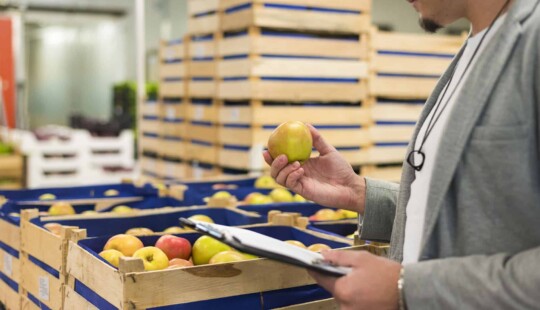Climate change is one of the biggest challenges of the 21st century and settling for doing “less harm” is no longer sufficient. It is urgently time to “do more good.” As an enabler and exemplar, SAP is committed to contributing to climate protection and has added the goal of planting 21 million trees by the end of 2025 to a comprehensive portfolio of measures.
Why does this matter? Trees are an essential part of our earth and invaluable in maintaining the stability of our planet. According to the United Nations (UN), over 80% of terrestrial animals and plants live in forests and approximately 1.6 billion people rely on forests for their daily subsistence. Moreover, forests absorb about 2.6 billion tons of CO2 each year — a third of the CO2 emissions that are released due to the burning of fossil fuels.
Forest restoration and protection has become an important pillar of addressing climate change through nature-based solutions. SAP’s goal to restore ecosystems and foster sustainable development by planting 21 million trees before the end of 2025 is therefore an important addition to its portfolio of climate measures and complements much needed action to avoid emissions in the first place.
Harnessing the Power of Technology
Deforestation and disasters such as wildfires accelerate climate change. However, digital technologies can help fight it: for example, the nongovernmental organization Rainforest Connection is working with SAP and using discarded smart phones, machine learning, and an app to track and stop illegal loggers.
To scale impact even further, SAP is collaborating with customers and partners to co-innovate solutions that enable systemic change toward a more inclusive, circular, and decarbonized economy. Climate 21 was launched to build analytical and transactional capabilities into enterprise applications, which can help customers understand and minimize the greenhouse gas footprint of their products and operations along their value chains. Additional programs focusing on a circular economy and holistic steering and reporting are under way to accelerate sustainable business transformation further.
Leading by Example
To walk the talk, SAP is reducing its own greenhouse gas emissions as well as taking action to protect and restore forests.
The journey started back in 2009, when SAP set the first goal of reducing its global greenhouse gas emissions to the year-2000 level by 2020. This target was met at the end of 2017, despite growing more than fourfold in the interim. The next milestone is in 2023, when SAP aims to become carbon neutral in its own operations – two years earlier than previously envisaged.
To achieve this, the company follows a three-pillar approach: avoid, reduce, compensate. The goal is to avoid emissions in the first place; for example, by using virtual telecommunication instead of business flights, a practice that has naturally expanded during the pandemic and was one major driver for SAP overachieving by 43% on its target for reducing net carbon emissions in 2020, generating 135 kilotons (kt) instead of the anticipated 238 kt.
Secondly, if a share of its greenhouse gas emissions cannot yet be avoided, SAP aims to reduce it through innovations, among others in the areas of building efficiency, data center operations, carpooling, and car sharing, as well as e-mobility. For example, SAP is powering its own data centers and facilities with 100% renewable electricity and working toward 33% e-cars in its global car fleet by 2025. Green IT initiatives foster sustainable IT equipment usage and promote tools such as Ecosia as default search engine. In 2020, SAP implemented additional energy and climate measures within its operations, ranging from opening a new office with energy-efficient design in Australia and implementing more efficient data center technology in Germany to introducing a bike fleet at SAP Hungary and installing photovoltaic systems in Austria.
21 Million Trees by the End of 2025
For emissions that cannot yet be reduced or avoided, the company thirdly invests in high-quality carbon credits. For example, SAP has been a long-term investor of the Livelihoods Carbon Funds (LCF) since 2012. In close collaboration with rural communities and partners across the world, these funds realize valuable projects that enable sustainable development and environmental benefits, such as carbon dioxide capture, improved water quality, and habitats for wildlife, as well as income opportunities for rural communities.
SAP has also donated funds to restore ecosystems and improve people’s lives. In 2020, Eden Reforestation Projects planted over 1.3 million trees in Madagascar, Haiti, Indonesia, and Nepal on behalf of SAP. In 2021, SAP continued to support organizations on a mission to restore native forests. For example, SAP partnered with the UK charity The Carbon Community on new scientific forestry research to enhance nature-based solutions to climate change and improve the efficiency of carbon removal from the atmosphere. In Australia, ReForest Now planted 20,000 trees for SAP, which will help restore critically endangered subtropical rainforest.
Yet much more climate action is needed. In support of the UN Decade on Ecosystem Restoration 2021-2030, SAP recently joined the 1t.org corporate alliance, which aims to conserve, restore, and grow trees worldwide, with a pledge to plant 21 million trees by the end of 2025.
As the UN correctly states: “Restoration is a monumental task. Over the next 10 years, every action counts. Every single day. Every country, company, organization, and individual have a role to play.”
We invite you to join us and the UN Decade for Ecosystem and help build a more sustainable tomorrow.



